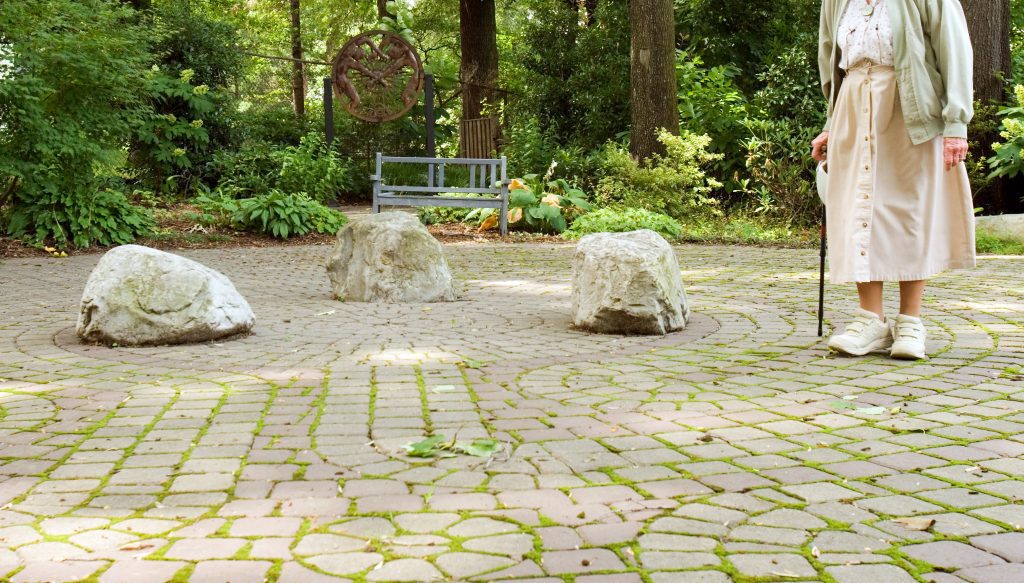On a trip to England in 1995, Tom and Kitty Stoner visited an urban park tucked in the midst of a busy London neighborhood. This serene and protected park was used by many as a place of refuge during World War II. Wooden benches lined the walking path. On the back of many of the benches were the reflections of those who experienced a sense of community and solace in this special place during the worst days of WWII.
It was Tom and Kitty’s belief that if an urban green space could provide such a place of sanctuary at such a difficult time in history, perhaps places conceived and created by urban communities in our time could also provide opportunities for reflection and rejuvenation. From this idea – and with this desire – the TKF Foundation was formed.
Open Spaces Sacred Places, today and in the future
Now over 20 years later, we celebrate 130 “Open Spaces Sacred Places” that demonstrate how real-world civic green spaces function, and their meaning in communities. These TKF-supported spaces, scattered across the United States, exist in communities of need (hospitals, urban centers, natural disaster areas) and arose out of community expression. In addition, the spaces share four central design elements. The design elements arose out of that initial moment with Tom and Kitty, and came to fruition using historic design of sacred spaces, design literature, and community expression.

“A vision for civic sacred can be achieved at different scales. High quality design can be used to create a sacred space wherever there is opportunity. Community policies supporting networks of sacred spaces enable more people to enjoy benefits, and in a way that is fair to all.” – TKF Foundation
Portal
The first design element you will find as you enter an Open Space Sacred Place is a portal which the visitor passes through. This could be an archway, gate, trellis, overhanging trees or a culturally significant marker. Passing through the portal marks the transition from the space of every day life to a reflective space where one can experience the power of nature.
Surround
The surround consists of design elements which define the boundary of the sacred space. It could consist of a small fence or plantings, a natural opening in the trees or even previously existing structures. No matter what it is made from, the surround creates a sense of security and separation from the stress and challenges of everyday life.
Path
Walking a path allows visitors to focus their thoughts and achieve a mindfulness about their surroundings. It could be a straight path through garden plantings or a labyrinth that leads the visitor back and forth extending a smaller space. The meditative act of walking a path can ground one with the earth while creating a connection to the greater sacredness of a specific space.
Destination
The destination is an appealing feature or end point that draws the visitor into the space. It could consist of a beautiful view, a quite spot away from the noise of the city or just a place to sit, rest and experience the fascination, awe and tranquility that nature can provide.
Advancing Beautiful Design
The TKF vision of urban park design led to thousands of visitors experiencing nature in a nearby, accessible place. As more people move into cities, these nearby nature spaces that provide mental and physical health benefits are needed more than ever. Although significant, it is not enough to say these are beautiful spaces. And, it is not enough to say these places help us feel better without saying how or why, or who “us” includes. For city planners and community leaders, scientific research and community feedback is essential for these spaces to come to fruition.
In many communities, research and scientific evidence are used to support policy and programs, and secure budget resources. Over the past 40 years, numerous scientific, peer-reviewed studies reveal the community health benefits of restful, mindful time in nature. Earlier this month we examined the importance of nature encounters and the role urban green spaces have in mitigating noise and supporting mindfulness. This information can aid public space advocates in making the case for installing civic green spaces in their communities.
Building on decades of design and independent research, the TKF Foundation calls for intimate green spaces that are not distributed in some random way, but are part of intentionally funded and planned city-wide systems of small spaces. These spaces, nestled in bustling urban environments, will enable necessary and frequent down time for quiet, mindfulness, and reflection. A network of parks, gardens and green spaces can include public or private properties, as well as facilities imbedded within special land uses, such as campuses, transit stations, or retail centers.
Can you envision a time when every urban community in the U.S. will provide people with opportunities for intimate, intentional daily doses of nature through the creation of a system of nearby nature spaces? Every person, in every community, deserves to have access to well-planned, public, nearby nature sites. In your neighborhood, do you have a special place that has these design elements? We invite you to share these design ideas with your community, and consider how pre-existing spaces could be modified in ways that invite others to sit and reflect.
